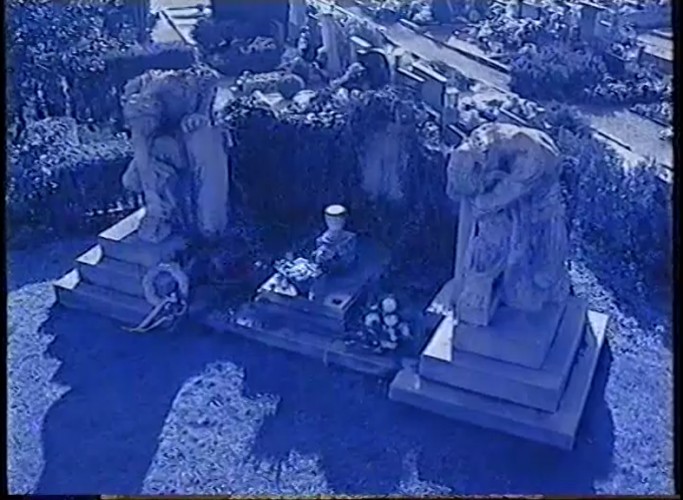The sculptor Lojze Dolinar was born in Ljubljana on 19 April 1893 into a family of modest means, his father was a baker. He received his first training in the sculpture department of the Men's Trade School in Ljubljana and later studied sculpture under Professor Josef Mtillner at the Vienna Academy (1910-1911) and then under Professor Georg Müller at the Academy in Munich (1912-1913), returning to Ljubljana via Prague. Before World War I he exhibited in Ljubljana and Belgrade, in 1917 he was mobilised in Judenburg in Austria. After the war he established a family in Ljubljana, but financial difficulties forced him to go to America, to the United States (1920-1921). He visited Cleveland and spent several months in New York. He found work with the sculptor Malvina Hoffman, who was at that time working on a memorial for students who had fallen in the war. Illness forced Dolinar to return to Ljubljana, where he set up a small studio as soon as his income permitted. In 1932 he moved to Belgrade where he built a new house with a studio. It is there that he spent the difficult years of World War II. From 1946 to i 959 he was Professor of Sculpture at the Belgrade Art Academy. In 1962 he returned to Slovenia and found a new home in Kranj, in return for a considerable collection of sculptures which he donated to the municipality. These were put on show in the Town Hall in a small permanent gallery of Dolinar s sculpture (1966). He spent the last years of his life between Kranj, where he lived with his second wife, and Ičiči in Istria, where his first wife lived. He died in Ičiči on 9 September 1970 and was buried in Ljubljana.
Among other awards he won a Gold Medal at the International Exhibition of Decorative Art in Paris in 1925 and was made Chevalier of the Légion d'honneur in 1933 for the memorial to Lamartine in Belgrade. In 1953 he became a corresponding member and 1970 a full member of the Slovene Academy of Sciences and Arts. In 1969 he was awarded the Prešeren Prize, the highest Slovene award for artistic work.
In his first exhibitions at the Jakopič Pavilion in Ljubljana Dolinar already demonstrated an early talent, especially for portraits. He soon went beyond academism, blurring the details of the living model or transforming them into picturesque Rodinesque surfaces, as for example in what was at that time the most successful portrait of his benefactor, the painter Rihard Jakopič (1912).
In contrast with the lively surface of that portrait the marble head of Fili Zupančič (1917) is smoothly modelled, with engraved decorative wavy lines in the manner of Art Nouveau and a melancholy expression. The small-scale sculptures he produced at that time were also in Art Nouveau style. In 1913 Dolinar created an overlife-size statue of Matija Gubec, the leader of the peasants' uprising in the 16th century. To heighten the dramatic effect he employed a highly strung anatomy, with sharp cuts for the deformed shapes of the tense hands. Except for the head, this figure was destroyed during the war. It was followed by the tomb of the Catholic social reformer Janez Evangelist Krek at the Žale cemetery in Ljubljana (1918-1920). Two monumental figures of bowed giants had been used to symbolise mourning - an idea that is known from prewar memorial sculpture of northern countries. Contemporary critics agreed that this was a successful solution.
The decade after the war was a time of intensive work on architectural sculpture for Dolinar. In Ljubljana he collaborated with prominent architects, among them Vladimir Šubic, on the sculptural decoration of buildings on Miklošičeva Street and on the Nebotičnik skyscraper, for which he modelled a nicely strung, almost classicistically smooth symbolic figure (1927-1931). Even more extensive was his work in Belgrade on the palaces of banks and ministries and on the University Children's Clinic. The shapes of this sculpture vary, they are more often stylised, with sharply cut edges and an engraved anatomic structure, than softly plastically rounded.
Among the works that Dolinar produced in the interwar period are monuments to the fallen of World War I which are standard and modest in their execution, and a number of excellent tomb sculptures.
He won first prize in the competition for a monument to the author Ivan Cankar in Vrhnika (1929) with a delicately expressive and picturesquely animated sculpture; however, he did not get the commission to execute it because the figure was too modern for the clients.


